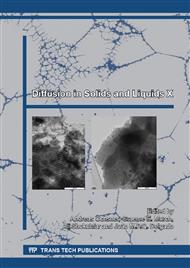p.136
p.142
p.148
p.154
p.160
p.166
p.172
p.178
p.183
Influence of Mortar Joints on the Moisture Transfer in Layered Materials
Abstract:
One of the main causes of older and heritage buildings degradation is moisture, in particular the rising damp from the ground. The construction materials which are in contact with water or moist soil are subject to capillarity, which is defined as the phenomenon of a liquid rising through the capillaries of a solid, leading to the emergence of several pathologies.The height of progression of the moist front depends on the climatic conditions of the ambiences, the isolation, the wall thickness, the porosity and porometry of the materials, the presence of salts and the nature of the coating materials.The objective was the study of the interface between layers through the introduction, in the automatic calculation program WUFI-2D, of fictitious layers between the layers of brick and mortar. The fictitious layers correspond to the part of the brick that above and below the joint receives the mortar, and for this reason they are small layers whose thickness and properties are unknown and are intended to be characterized. Through simulations on the WUFI-2D program and using lab results will be possible to reach a function that relates the thickness and the properties of the fictitious layers.
Info:
Periodical:
Pages:
160-165
Citation:
Online since:
July 2015
Authors:
Price:
Сopyright:
© 2015 Trans Tech Publications Ltd. All Rights Reserved
Share:
Citation:


